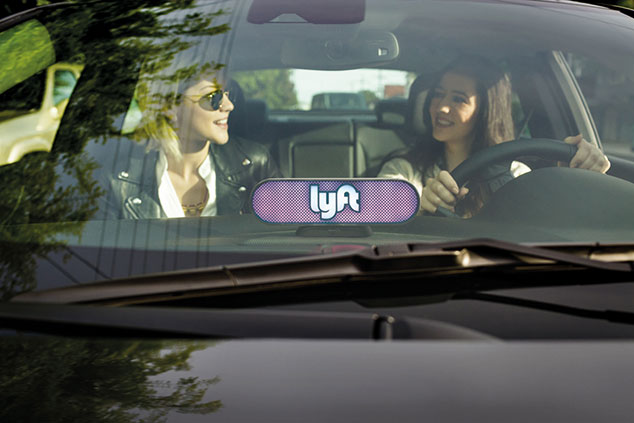
This year’s first big headline-grabbing tech IPOs (initial public offerings – when a company sells its shares to the public for the first time) are in one of the hottest sectors around. Taxi-hailing firms Uber and Lyft are seen as plays on the future of transport, with hopes they will transcend being mere “platforms” connecting drivers with passengers, to become big players in the world of autonomous vehicles. As with any IPO there are questions over whether they will live up to the hype or leave investors poorer.
However, Lyft – the first to come to market – has revived another controversy often associated with tech IPOs – the question of dual-class share structures. When Lyft goes public, its co-founders, John Zimmer and Logan Green, will own Class B shares, while the Class A shares go to the public. What’s the difference? A Class B share has 20 votes, while a Class A has just one. So the pair will control more than 60% of the voting power in the company, even though they will own less than 10% of the shares.
As Shannon Bond and Nicole Bullock note in the Financial Times, there are similar share structures at companies from Alphabet (owner of Google) to Facebook to instant messaging group Snap (which managed to offload shares with no voting rights at all). The companies (and some investors) argue that if you have a founder with a powerful vision, then insulating them from the demands of public markets is sensible – you get to invest alongside a genius and they don’t get distracted by fielding shareholders’ moans.
Yet while investors in Alphabet might not be complaining now, you can’t say that for every such stock. Facebook shareholders might now well wish they had more control over chief executive Mark Zuckerberg, for example, and Paul Singer, founder of activist group Elliott Management, writes in the FT that “companies with dual-class structures tend to underperform over the long term”, partly due to this lack of accountability.
Entrepreneurs “deserve our respect”, says Singer. “But once they sell the vast majority of the company… they should not be allowed to run it forever without any shareholder input. Public ownership must mean public accountability.”
At MoneyWeek, we tend not to be fans of IPOs – if the current owners of a private company, who should understand the business and its prospects better than any external investor, believe that now is the ideal time to sell, then you have to question whether it’s a good time to be a buyer of that company. Throw in the added problems that you don’t even get a transfer of ownership (not to mention the fact that Lyft doesn’t yet actually make any money), and we’d steer clear of this particular IPO.
I wish I knew what the PEG ratio was, but I’m too embarrassed to ask
A price/earnings-to-growth (PEG) ratio is used to try to spot shares that are undervalued relative to their growth prospects. Well-known investors Peter Lynch and Jim Slater both highlighted it in their writing as part of their stock-picking process. The ratio compares a company’s price/earnings (p/e) ratio with the expected growth in its earnings per share (EPS).
To calculate it, you first find the p/e ratio, which is simply the share price divided by EPS. This gives you an idea of how much investors are currently willing to pay per £1 of historic or future earnings. You then look at how quickly earnings are expected to grow in the future (by using analysts’ estimates, for example). To get the PEG ratio, you simply divide the p/e ratio by the expected annual earnings growth. Broadly speaking, a ratio below one is on the cheap side, and above one is expensive, with a PEG of one representing “fair value”, according to Lynch.
The PEG ratio is seen by some investors as a better way to weigh up a company’s value than relying on the p/e alone, because it takes growth into account. A rapidly growing company – all else being equal – should trade on a higher p/e than a slow-growing one.
So the PEG ratio can be a useful tool for comparing companies in similar industries. For example, one company might have a p/e of 15, but expected earnings growth of 20%, giving it a PEG ratio of 0.75 (15/20). Its rival may also have a p/e of 15, but expected earnings growth of 5%, giving it a PEG ratio of three.
As with most ratios, the PEG is useful in certain circumstances and in combination with other forms of financial analysis. A PEG ratio won’t help you much with a slow-growing (or shrinking) company, and earnings forecasts must always be taken with a hefty pinch of salt. Yet as a starting point to screen for promising high-growth companies, it can be a useful tool.